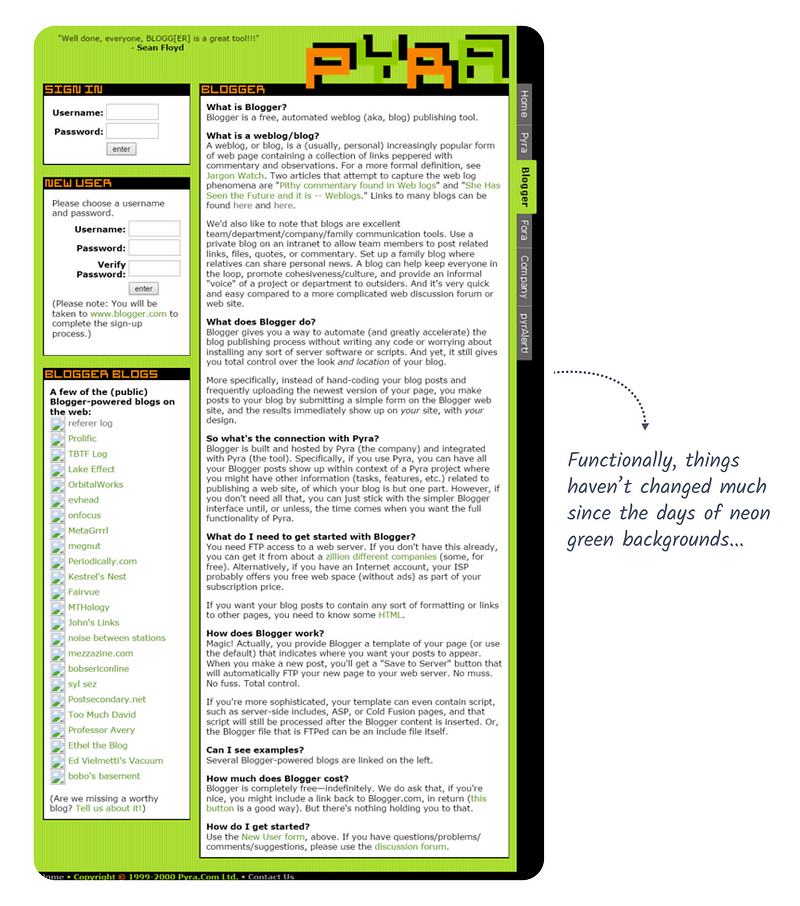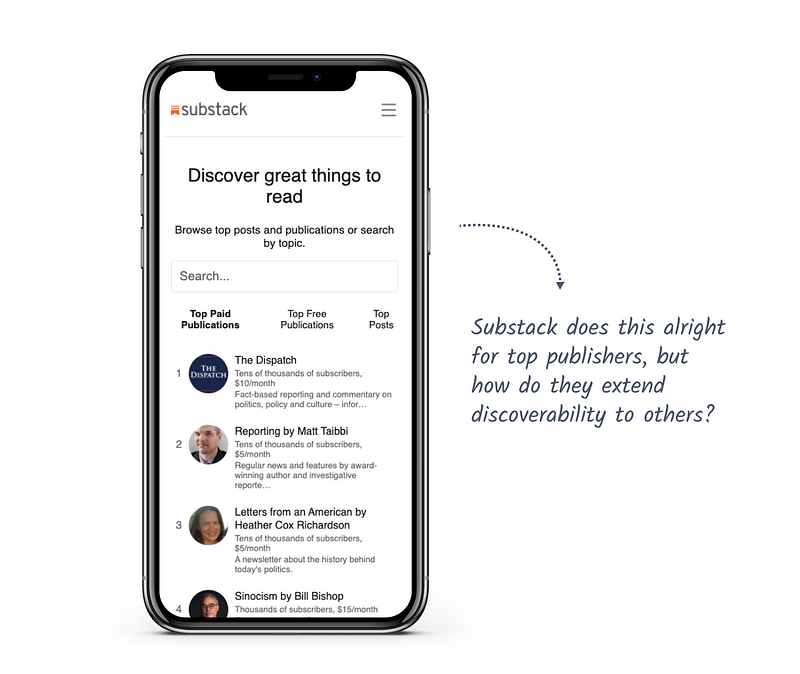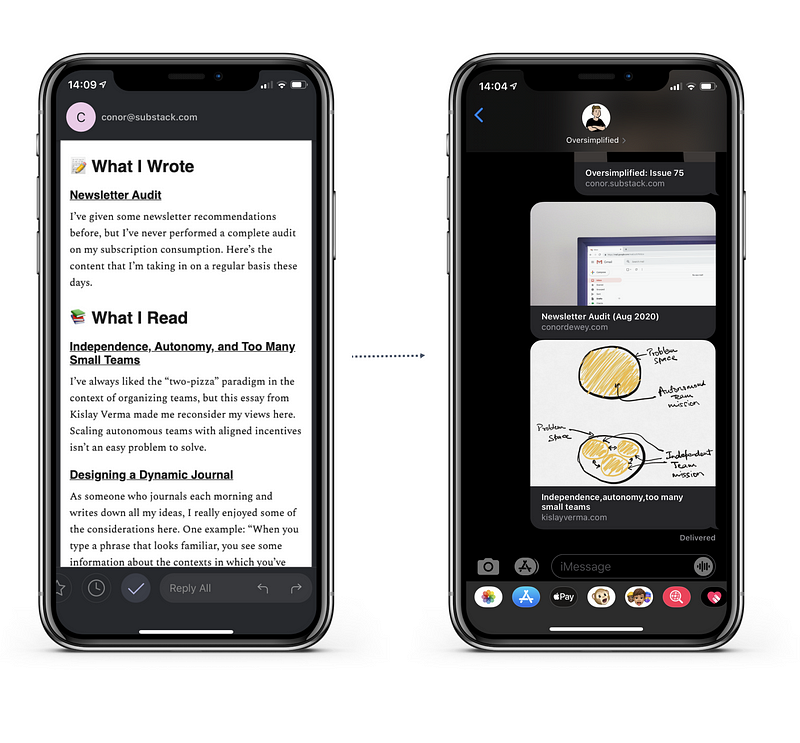🔮 On the Future of Newsletters
Aug 08, 2020 • 10 min • Newsletters
Around this time last year, I distinctly remember thinking that newsletters were blowing up as a form of content consumption. Since that point, it feels like hype around them has continued to grow exponentially.
Just about every time I go on my Twitter feed, I'm seeing some form of newsletter chatter these days. Substack has made it simple for writers to create newsletters and collect payments. Andreessen Horowitz tossed $15m into the space, which definitely helped get people's attention. Publications like The Atlantic and The New York Times followed suit and wrote up notable pieces on the rise of newsletters.
Don't get me wrong — I'm all aboard the newsletter hype train, but I also don't think it's wrong to say that things are going to look different in the future.
Blogging 2.0
Before we dive into predictions, let's take a look at the current state of things. If you look at the newsletters that have done really well on Substack, they generally share a few commonalities:
- They are long-form essays
- The writing is usually high-quality
- They specialize in a specific area or niche
Coincidentally, these are the same traits that have made internet blogs successful for 20+ years. When you get down to it, not all that much has changed since the early days of mainstream online writing.

Julian Lehr touched on this idea in his excellent essay, Newsletters and Alternative Trade Routes, which helped inspire this post:
Newsletters feel more like a rebirth of blogs and RSS: Both typically have long-form, high quality content and they are distributed via an open standard.
But if writers have been doing this on blogs since the late 1990's then why has there been this dramatic shift to the world of newsletters in the last few years? At the end of the day, it all comes down to distribution.
Alternative Trade Routes
If you scroll through your social media feed of choice, it doesn't take long before you realize how crowded the space is. Mike Isaac comes to a similar conclusion in The New Social Network That Isn't New at All:
The shift toward newsletters is part of a broader change. For years, Mark Zuckerberg, Facebook’s chief executive, asked us to live in a more “open and connected” version of the world. And billions of us did, posting status updates, photos and videos on the social network and flocking to other services like Twitter, where I post regular messages about my mood, personified in photos of my dog.
Turns out that all of the status updates and dog photos create a lot of noise. Platforms can mitigate this to some degree with algorithms, but controlling the massive firehose of content isn't an easy problem to solve.
When channels get crowded, creators begin to seek out new mediums of distribution, or at least quieter ones.
2011: software is eating the world
— Nathan Baschez (@nbashaw) August 7, 2020
2021: content is eating the world
Email was the perfect alternative to social media. It's all on an open standard. It's durable, portable, and not going away any time soon. Andrew Chen seems to agree in his summary of the a16z Substack investment:
Because email is an open platform, it’s durable: It was invented almost alongside the early days of the internet, and is here to stay. It’s also portable: You can take your email addresses with you if you switch providers, offering a degree of control beyond what social media and even RSS offered in terms of audience portability (as I and many other niche content creators on the internet learned the hard way). The timeframe for building relationships over email is practically infinite; it’s not limited by how long a platform survives or switches its business model.
The other nice thing about newsletters is that they don't just conveniently navigate around the attention-grabbing battleground of social media. They also reduce friction for readers. Ben Thompson shares his views:
Email is a feed that people check every day, and because it is an open standard, it is free. That makes it the best possible place for a media entity to be, because building a connection means meeting your customers where they are, not making them jump through hoops to meet you in a place convenient for you.
It's worth noting that this problem was initially solved to some extent with RSS. Though for whatever reason, RSS readers never achieved mainstream adoption. Email has finally found its role as the default for where push-delivered content goes.
Predictions for the Future
Hopefully by now I've provided solid enough reasoning for the rise of newsletters. Let's get into where I think the space might end up heading in the future.
📈 We Still Aren't at Peak Newsletter
Content will continue to shift to more private channels like email as a primary medium for distribution. Social media will move into doing more of what it does best: Amplifying the best stuff out there. Big time writers are making the move to email every day. It will quickly become the default.
This also means more paywalled content, as more writers form direct relationships with readers. Platforms like Substack are making this easier than ever and we're getting progressively more used to paying for worthwhile content online.
Ideas to chew on:
- Turn blog archives into email newsletters. This could be a paid service or newsletter. There are a lot of old blog posts that missed out of new mediums of content consumption. (Source)
- Newsletters for ideas. What if you could input concepts or groups of ideas and get the most valuable content on those terms across platforms delivered to you? This is similar to what Mailbrew does now, but I'm thinking a little more freeform.
🕵️♂️ Someone Will Tackle Content Discovery
This might be the hardest problem in newsletters at the moment. Discoverability is a big downside for new publishers moving from a platform like Medium onto their own email newsletter.
There are human-curated solutions to this like Newsletter Stack that do a good job of this today, but eventually I think it's going to be handled best on a platform-level by a player like Substack or Stoop.

One related experiment to watch here is Winning the Internet from Russell Goldenberg and the team over at The Pudding. I personally can't wait to see new projects here in the next few years.
Ideas to chew on:
- Newsletter Birchbox. Each week you get an assortment of curated newsletter issues from different publishers around diverse topics. You can subscribe to the ones you like and get them more regularly.
- Newsletter Grades. Whoever is able to handle platform-level discovery should also be able to produce proxy metrics for subscriber counts, open rates, engagement, etc. that would make finding great content way easier. This raises some privacy and tracking questions, but man this would be cool.
📫 Our Inboxes Will Quickly Become Crowded
This effect won't be as extreme as the social media firehose mentioned earlier, but it's certainly going to get more difficult to stand out and parse new content as push-to-email becomes the default common pattern. What would your inbox look like if everything you read was delivered to you via email?
We have power over this outcome since ultimately we control we do and don't subscribe to, but I still see us treating our inbox a little differently as a result of more content consumption. Personally, I've seen myself get less resistant to giving away my email address than before, as dozens of Substack newsletters can attest to.
There are a number of potential repercussions here, but the one that I'm most interested in is alternative trade routes to email. When creators aren't getting the attention they want over email, where will they turn next?
Julian Lehr suggests Telegram blogs as a medium to watch over time. I think this is generally on the right track:
Tucked between personal messages from friends, Telegram blogs are read in an even more intimate setting than email. In contrast to newsletters, readers can see the entire history at once (less ephemeral) and engage with the author and/or other readers via built-in community features.
Taken a step further, some creators are sending out tips and updates directly over SMS like Nik Sharma does for his new content:
I don’t have a newsletter but I partnered up with Community, a new texting platform, to push my updates! 💬
— Nik Sharma (@mrsharma) July 16, 2019
You can expect:
• New articles
• Thoughts on DTC/trends
• 1:1 txt w/ me
• Interviews w/ dope founders/brands
Text 917-905-2340 or click https://t.co/oUNqnfw9AR
🤗🎉 pic.twitter.com/qgfI7oxi6i
I mentioned before that part of the reason newsletters work well is that they meet readers where they are. Well, younger audiences growing up on iMessage and Snapchat are used to different mediums than millennials and boomers are.
I wouldn't be surprised at all if message-based broadcasting sees much more adoption in the coming years, whether that's through a platform like Telegram, Snapchat, or natively via SMS.

Note that the medium shapes the message. If this happens, we will likely see shorter-form, more rapid-fire content. I'm also not convinced that this necessarily hurts email or long-form. I think there's room for something new to branch off of "newsletters" that's tailored to the next generation and new consumption habits.
Ideas to chew on:
- Newsletter-first email client. I've never seen a client optimized for this amount of content and curation via email. This would probably look a lot different than the current versions of Gmail, Superhuman, and Hey.
- Choose your medium. What if you got to choose where you received content when you subscribed? You could receive it in your inbox (boring), over iMessage, or on some other platform like Facebook Messenger.
- RSS for people. We should be able to subscribe to people across channels to get updates and new content. WaitWho.is is the first project I've seen that has some success doing this for a handful of curated thought leaders.
🤯 Newsletters Will Be More Than Written Content
Eventually, every newsletter that hits some critical mass will come with a community. Interactions and discussions with other subscribers will go from a cool feature to something that is just expected.
We see this in Substack today, where newsletters cater to a certain niche and it acts as a signal for others in that niche to come and discuss topics. Their discussion feature gets a surprising amount of love for its prominence in the product. At some point we'll see this start to change as community becomes a first-class citizen.
Every company website has an "about us" tab
— Greg Isenberg (@gregisenberg) July 14, 2020
Every company website will have a "community" tab
It's only a matter of time
Separate, but equally interesting is the relationship between newsletters and eCommerce. It will become super simple and commonplace to sell products to your niche audience as platforms like Shopify and Stripe continue to do more here.
If you could click a few buttons and sell some branded products to your most supportive subscribers, why wouldn't you?
Lastly, newsletters will drive more live events. Video streams and spontaneous conversations will stem from new issues. In the old days, when you published a blog post online, others would find it at various times and it would have to bubble up through social media.
Now that content is delivered primarily through email, more readers are engaging with your work at the same time. Why not launch into a companion podcast a la Clubhouse or start a Twitch live stream for a real-time AMA on the essay you wrote?
Ideas to chew on:
- RSS revived as channels. Basically Slack, but where author's own channels and each thread is a new piece of content that notifies readers and sparks discussion within the app. (Source)
- Clubhouse for newsletters. When you send an issue, you generate a chat room or live stream where readers can have conversations and discuss the writing. Like a just-in-time audio/video party around a very specific topic or piece of content.
Thanks for reading! I threw a lot of ideas out there in this post, so I'd love to hear any thoughts on them or the newsletter space in general. I always enjoy geeking out on this stuff, so hit me up and let's get into it.
If you enjoyed this post and you’re feeling generous, perhaps like or retweet the post on Twitter. You can also subscribe in the form below to get future posts like this one straight to your inbox. 🔥